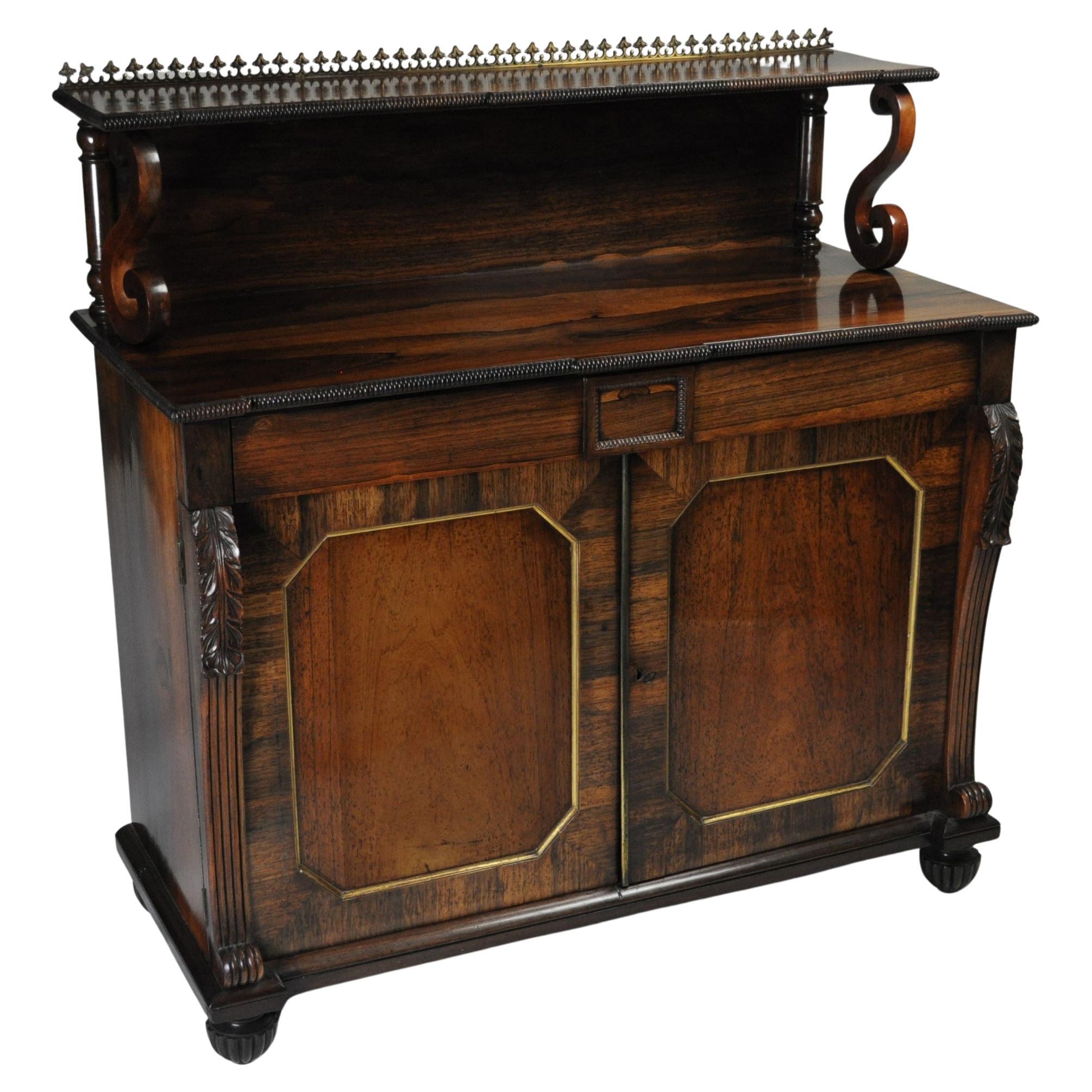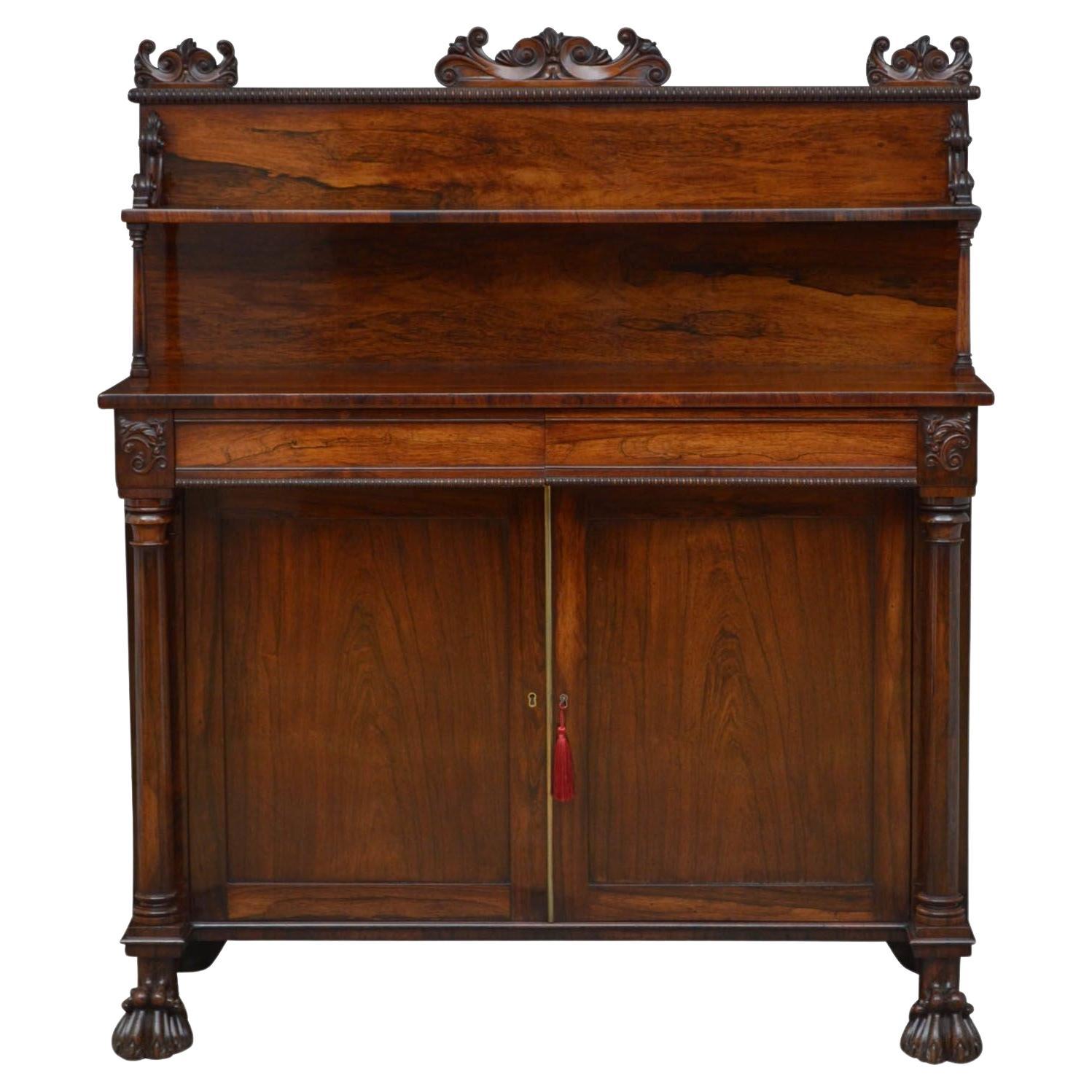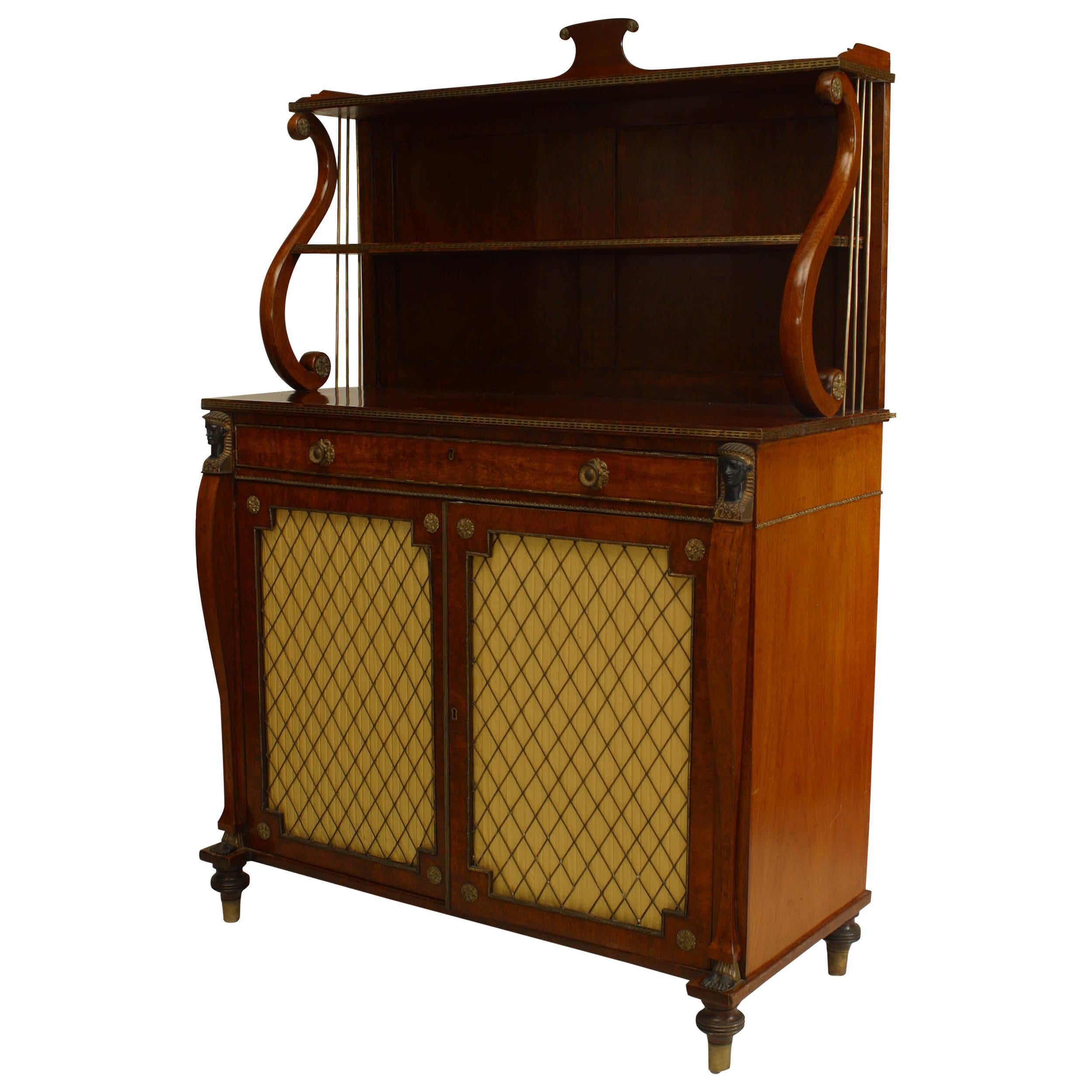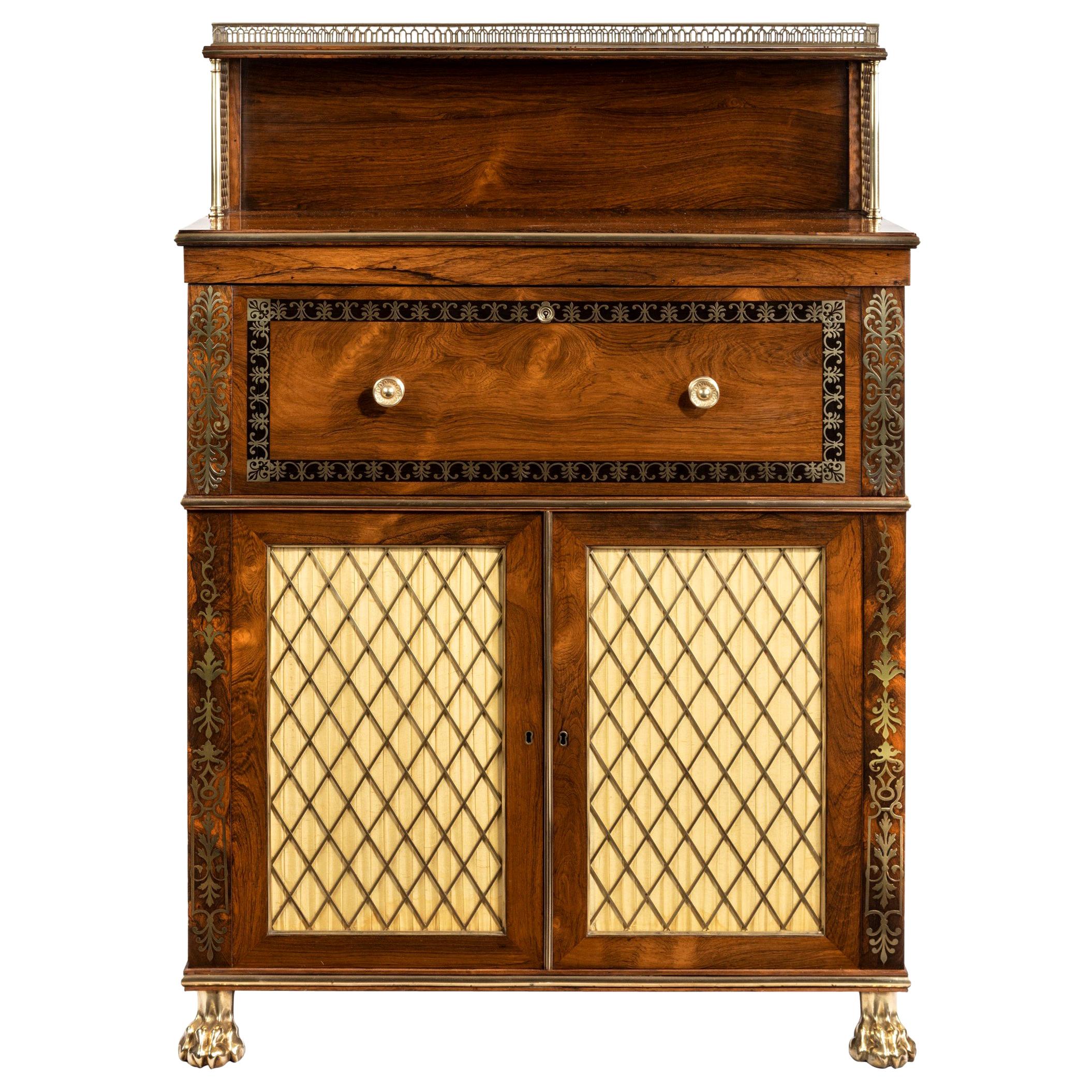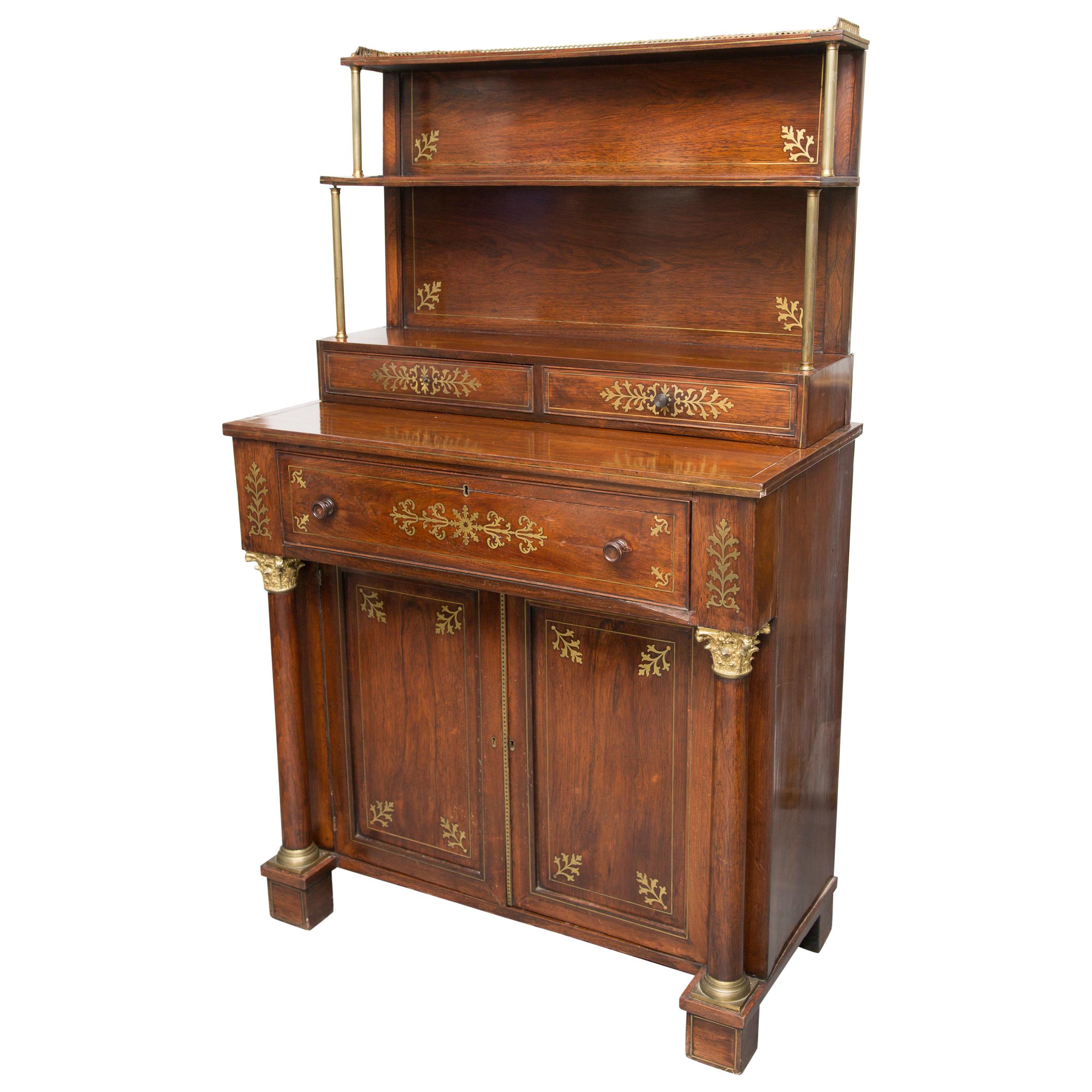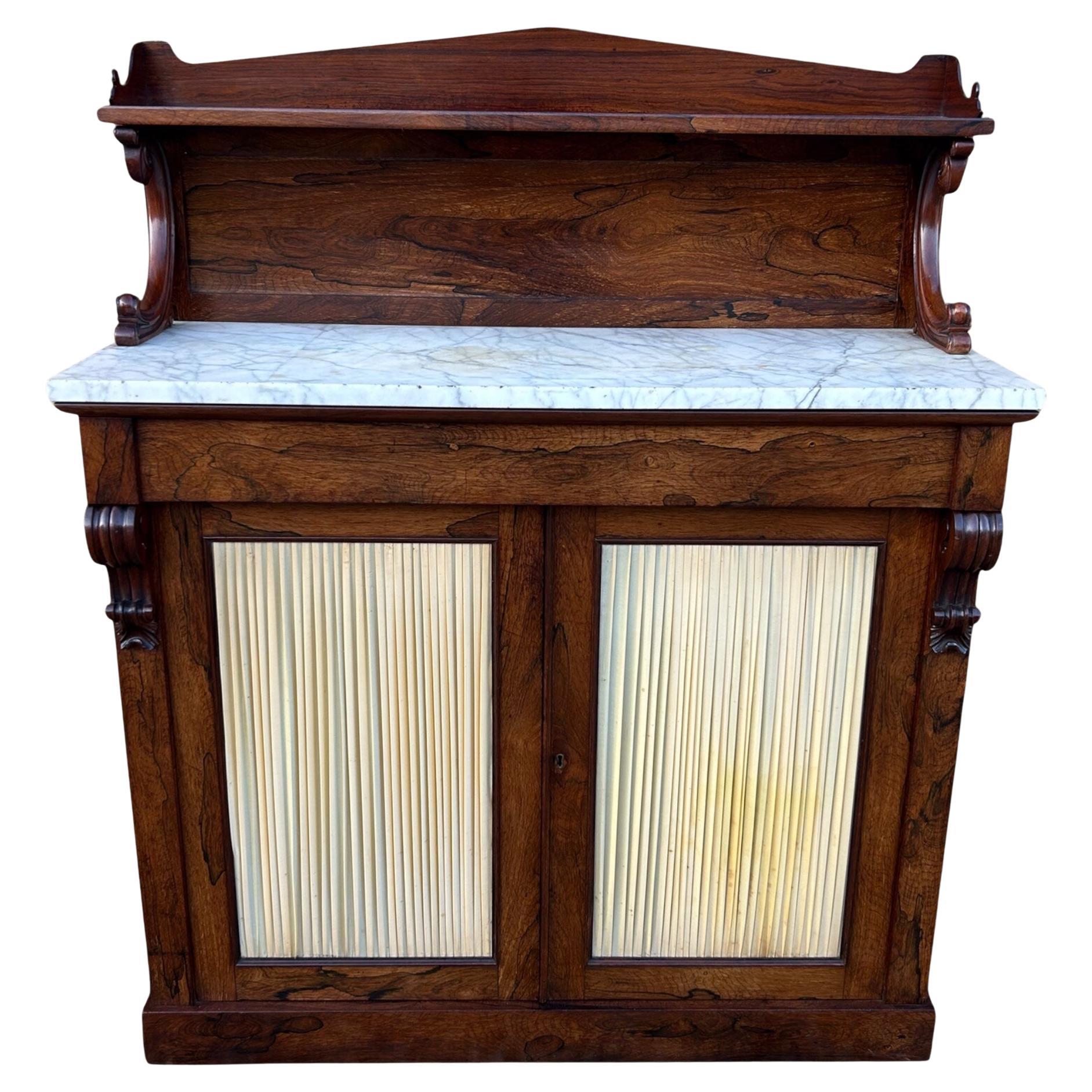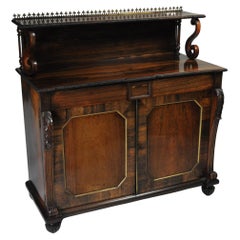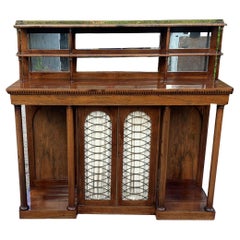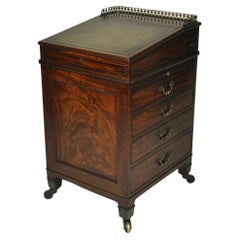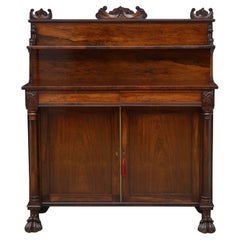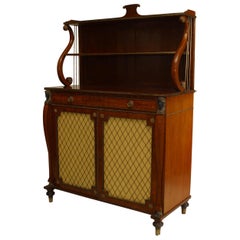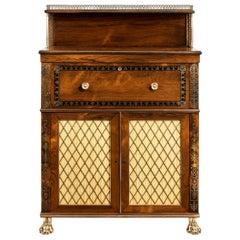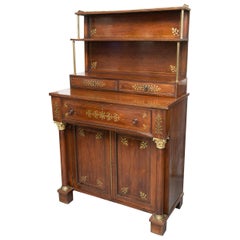Items Similar to Regency Rosewood Secretaire Side Cabinet/Chiffoneer
Want more images or videos?
Request additional images or videos from the seller
1 of 14
Regency Rosewood Secretaire Side Cabinet/Chiffoneer
$16,211
£11,750
€13,861.23
CA$22,297.98
A$24,785.59
CHF 12,992.08
MX$302,692.04
NOK 162,198.57
SEK 152,598.59
DKK 103,456.18
About the Item
A superior quality and unusual Regency rosewood Side Cabinet, the top drawer with fold-down, leather-lined front, fully fitted with drawers and pigeon holes. below are a pair of silk-lined cupboard doors with original and elaborate brass grills. Standing on well-carved lions paw feet with scrolled heels.
- Dimensions:Height: 35.83 in (91 cm)Width: 25.6 in (65 cm)Depth: 17.33 in (44 cm)
- Style:Regency (Of the Period)
- Materials and Techniques:
- Place of Origin:
- Period:
- Date of Manufacture:circa 1820
- Condition:Replacements made: Replacement silk lining to the doors and replcaed velvet writing surface. Wear consistent with age and use.
- Seller Location:Folkestone, GB
- Reference Number:Seller: 3206971stDibs: LU6227230005162
About the Seller
5.0
Vetted Professional Seller
Every seller passes strict standards for authenticity and reliability
1stDibs seller since 2022
18 sales on 1stDibs
Typical response time: 7 hours
- ShippingRetrieving quote...Shipping from: Faversham, United Kingdom
- Return Policy
Authenticity Guarantee
In the unlikely event there’s an issue with an item’s authenticity, contact us within 1 year for a full refund. DetailsMoney-Back Guarantee
If your item is not as described, is damaged in transit, or does not arrive, contact us within 7 days for a full refund. Details24-Hour Cancellation
You have a 24-hour grace period in which to reconsider your purchase, with no questions asked.Vetted Professional Sellers
Our world-class sellers must adhere to strict standards for service and quality, maintaining the integrity of our listings.Price-Match Guarantee
If you find that a seller listed the same item for a lower price elsewhere, we’ll match it.Trusted Global Delivery
Our best-in-class carrier network provides specialized shipping options worldwide, including custom delivery.More From This Seller
View AllRegency Rosewood Chiffonier
Located in Folkestone, GB
A good quality early 19th century Regency period rosewood Chiffonier, the beaded edge, galleried superstructure raised on 'S' scrolled supports abo...
Category
Antique Early 19th Century English Regency Sideboards
Materials
Rosewood
Regency Rosewood Breakfront Side Cabinet / Chiffonier
Located in Folkestone, GB
A fine quality and very stylish late Regency rosewood inverted breakfront side cabinet with two raised shelves supported on turned columns and ...
Category
Antique Early 19th Century European Regency Sideboards
Materials
Mahogany
$3,973 Sale Price
20% Off
19th Century Regency Rosewood Double Sided Bookcase
By Gillows of Lancaster & London
Located in Folkestone, GB
19th Century English bookcase in the Manner of Gillows.
A fine and unusual Regency rosewood double sided bookcase of rectangular form with rounde...
Category
Antique Early 19th Century European Regency Bookcases
Materials
Rosewood
Mahogany Davenport Attributed to Gillows
By Gillows of Lancaster & London
Located in Folkestone, GB
Attributed to Gillows
A superior quality late 18th/early 19th century mahogany Davenport Desk The leather-lined top with brass gallery, lifting to ...
Category
Antique Early 19th Century English Regency Desks
Materials
Mahogany
Satinwood and Mahogany 18th Century Bureau Bookcase Attributable to Thomas Shear
Located in Folkestone, GB
An exceptional and remarkable late 18th century satinwood and mahogany cylinder bureau bookcase of outstanding quality and attributable to Thomas Shearer.
This magnificent bookcase ...
Category
Antique Late 18th Century English Sheraton Bookcases
Materials
Mahogany, Satinwood
Georgian Secretaire Bookcase
Located in Folkestone, GB
A fine example of a late 18th century mahogany secretaire bookcase. Original handles and locks. The dentil cornice above attractively glazed, astragal-doors. The lower half with a double, fully fitted secretaire drawer and three further long drawers, all with original handles and standing on original, shaped bracket feet.
A classical and elegant piece of traditional English country house furniture...
Category
Antique Early 19th Century English Georgian Bookcases
Materials
Mahogany
$3,863 Sale Price
22% Off
You May Also Like
Regency Rosewood Chiffonier
Located in Whaley Bridge, GB
Sn5051, outstanding Regency two door sideboard in rosewood, having a shelf to the back with finely carved decoration to the top and quadrant beaded edge flanked by C shaped carvings,...
Category
Antique 19th Century British Regency Sideboards
Materials
Rosewood
$4,028 Sale Price
20% Off
English Regency Rosewood Secretaire
Located in Queens, NY
English Regency rosewood secretaire cabinet with two upper shelves supported by a lyre form over a secretaire drawer fitted with a leather wri...
Category
Antique Mid-19th Century English Regency Secretaires
Materials
Rosewood
Regency Brass-Inlaid Rosewood Secretaire Cabinet
Located in Lymington, Hampshire
A Regency brass-inlaid rosewood secretaire cabinet, the rectangular top with a pierced galleried shelf with trellis work on the sides, above a secretaire drawer, banded with brass pa...
Category
Antique 1810s English Regency Cabinets
Materials
Brass
19th Century Regency Mahogany Chiffonier Secretaire
Located in WEST PALM BEACH, FL
This is a beautifully articulated and unusual English Regency mahogany chiffonier secretaire. The top section containing two shelves with round b...
Category
Antique 1830s English Regency Desks
Materials
Rosewood
Antique Regency Rosewood Marble Top Chiffonier with Two Door Storage Cupboard
Located in King's Lynn, GB
Here we have a Regency Rosewood Chiffonier with a white and grey marble top. On top of the chiffonier is a single galleried shelf supported by scrolled swan supports. There is a frie...
Category
Antique Early 19th Century British Regency Cupboards
Materials
Marble
19th Century English Regency Rosewood Chiffonier or Bar
Located in Richmond, VA
19th Century English Regency rosewood chiffonier or bar. Great size and color. The doors feature wire work over original rosewood panels instead of fab...
Category
Antique Early 19th Century English Regency Cabinets
Materials
Brass
More Ways To Browse
Lion Cabinet
Carved Lion Paw
Cabinets Folding Doors
Pair Regency Cabinets
Pigeon Hole
Regency Lion Paw
Pigeon Hole Storage
Pigeon Hole Cabinet
Antique Pigeon Hole
Lion Paw Cabinet
Cabinet With Lion Paw Feet
Door Grill
Grill Cabinet
Vintage Red Cabinet
1960s Glass Cabinet
White Display Cabinet
White Display Cabinets
Glass Fronted Drawers
